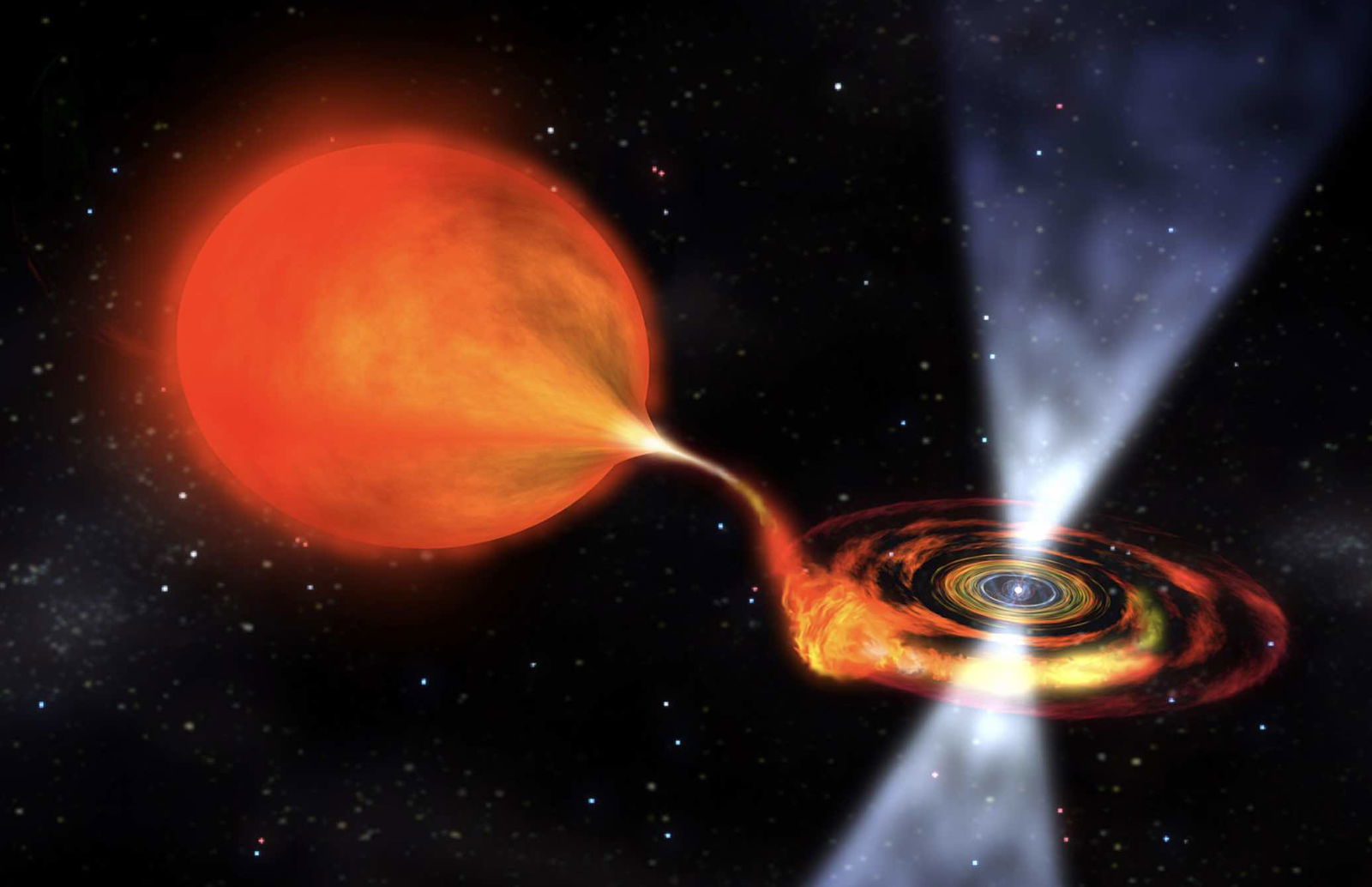An unusual celestial object recently discovered by astronomers has been revealed to be a bursting accreting millisecond X-ray pulsar, according to newly published research.
The new X-ray pulsar, designated SRGAJ144459.2-604207, was discovered using the Astronomical Roentgen Telescope – X-ray Concentrator (ART-XC) aboard the Spectrum-Roentgen-Gamma (SRG) high-energy astrophysics observatory, a joint German-Russian mission launched in 2019 featuring seven Russian-built X-ray grazing incidence mirror telescopes, for which NASA designed and calibrated the mirrors.
Initially observed in February 2024 as an outburst phase of the pulsar was declining, a coherent signal at around 447.8~Hz, modulated by the Doppler effect due to the orbital motion, was detected, indicating the presence of a binary system and the presence of an accretion disk.
Accretion disks are round, rotating bodies of matter that surround a massive gravitational body, in this case, an X-ray pulsar.
“The pulse profiles of the persistent emission, showing a sine-like part during half a period with a plateau in between, can well be modeled by emission from two circular spots partially eclipsed by the accretion disk,” the research team involved in the study report in a new paper detailing their findings, led by Sergey V. Molkov of Space Research Institute in Moscow, Russia.
X-ray pulsars are unique in that they produce very distinct, periodic variations in X-ray intensity, some of which last only a fraction of a second. Their short spin periods result from the lengthy mass transfer that occurs from a lower-mass companion star, transferred through an accretion disk, to a slow-moving neutron star. These odd X-ray pulsars exhibit behaviors that could be significant in terms of providing knowledge about thermonuclear bursts and the processes underlying them.
During their observations, Molkov and the team detected 19 of these thermonuclear X-ray bursts emanating from SRGAJ144459.2-604207. Each burst reportedly had “similar shapes and energetics, and do not show any signs of photospheric radius expansion,” the team writes in their paper.
Molkov and the research team also noticed a linear decrease in the burst rate near the beginning of observations, gradually increasing toward the end. The team says that spectral observations of the X-ray pulsar coinciding with these bursts “is consistent with the models of the neutron star atmospheres heated by accretion,” which they say seems to indicate a neutron star with a radius of between 11 and 12 kilometers at a distance of 27,000–35,000 light years from Earth.
The team was also successful in detecting pulses coinciding with the bursts, which conveyed how the pulse profiles show a significant difference from those observed in persistent motion. Nonetheless, Molkov and the team report that they were unable to determine what caused the unusual pulse profiles.
The paper’s authors write, “[W]e could not find a simple physical model explaining the pulse profiles detected during the bursts.”
The team’s new paper, “SRG/ART-XC discovery of SRGAJ144459.2-604207: a well-tempered bursting accreting millisecond X-ray pulsar,” can be read on the preprint arXiv.org website.
Micah Hanks is the Editor-in-Chief and Co-Founder of The Debrief. He can be reached by email at micah@thedebrief.org. Follow his work at micahhanks.com and on X: @MicahHanks.

